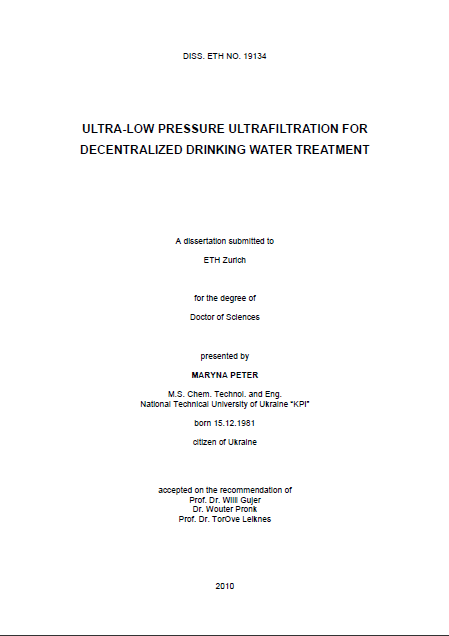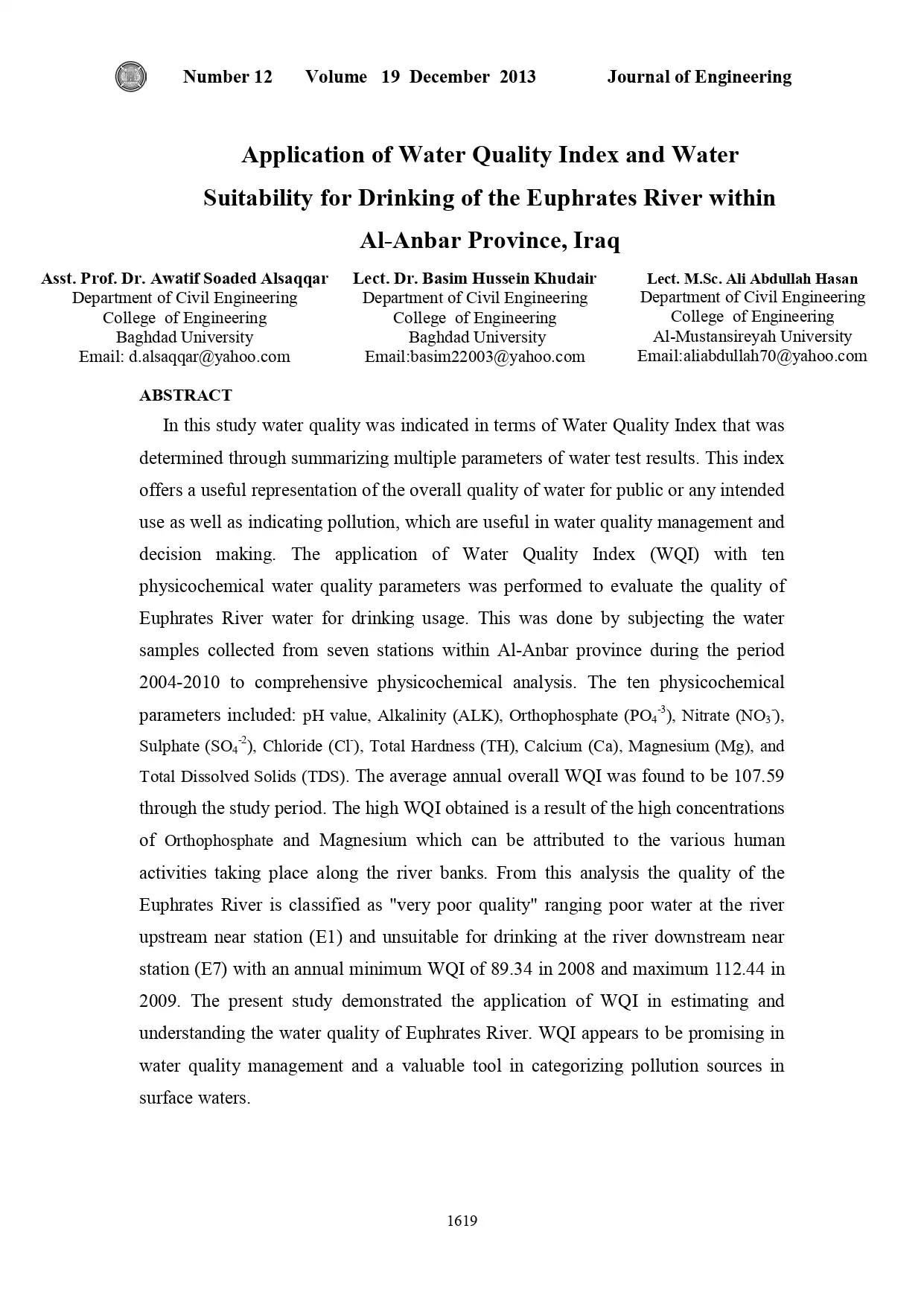Ultra-Low Pressure Ultrafiltration For Decentralized Drinking Water Treatment
Ultra-Low Pressure Ultrafiltration For Decentralized Drinking Water Treatment
Source : https://ethz.ch/en.html
presented by : MARYNA PETER
Abstract
Inadequate access to microbiologically safe drinking water continuously threatens the health and well-being of about a billion people, primarily in developing countries. Effective, lowcost and robust technologies are needed to redress this situation and meet the Millennium Development Goals for drinking water. Although ultrafiltration technology has become affordable for decentralized water treatment in developing countries, its widespread application is limited by membrane fouling and biofouling. Conventionally, regular backflushing, disinfection and chemical cleaning are applied in order to limit fouling, resulting in complex, expensive and maintenance intensive systems not suitable for
application in developing countries. The goal of this thesis was to investigate a new approach to ultrafiltration and fouling control in order to develop a low-cost membrane-based decentralized system and reduce energy and chemical demand in membrane systems in general. The stabilization of flux during dead-end ultrafiltration without backflushing, cross-flow or chemical cleaning under ultra-low pressure has not been observed before. This phenomenon allows gravity-driven ultrafiltration of surface water without any maintenance and pretreatment
at stable flux values of 4-10 L·h-1·m-2 for at least 6 months of operation at a hydrostatic pressure of 40-150 mbar, which corresponds to a height difference of about 0.4 – 1.5 m. In this thesis, the phenomenon of flux stabilization is documented and evidence is provided that flux stabilization is related to biological processes leading to structural changes in the fouling layer. The development of cavities, channel networks and heterogeneous structures
causes the decrease in resistance of the fouling layer. These processes counteract the increase of resistance of the fouling layer due to deposition, physico-chemical interactions and pore constriction due to irremovable fouling. The concentrations of biopolymers and low molecular weight compounds, the dissolved oxygen concentration and the concentration of colloidal humic acids are the major factors affecting flux stabilization. It is concluded that
biofouling, always considered to be the major limitation of membrane processes and associated with reduced performance, actually causes stabilization of flux. The phenomenon of flux stabilization can be implemented in simple low cost gravity-driven ultrafiltration systems for decentralized drinking water treatment. The stable flux value of 4-
10 L·h-1·m-2 is sufficient to cover daily needs of water for drinking and cooking for a family of five people using less than 0.5 m2 of membrane. While no pretreatment, pumps, chemicals or process control is required, the system costs could be kept low, especially when such systems can be produced or assembled locally. Furthermore, possibilities exist to further increase the capacity of the system. It is shown that the flux can be enhanced by intermittent operation as
well as manual forward flushing of the membrane.
Only logged in customers who have purchased this product may leave a review.














Reviews
There are no reviews yet.